In regions where water scarcity is a growing concern, greywater home gardening systems offer a sustainable solution for maintaining thriving gardens while reducing water consumption. By recycling gently used water from showers, laundry, and bathroom sinks, you can create a resilient garden that withstands drought conditions while lowering your environmental footprint and water bills.
This comprehensive guide will walk you through everything you need to know about implementing safe, legal, and effective greywater systems for your home garden, whether you’re a beginner looking for simple solutions or ready to install more advanced setups.
Understanding Greywater Basics
What Is Greywater?
Greywater is “once-used” water from your bathroom sinks, showers, bathtubs, and washing machines. It’s important to distinguish it from blackwater, which comes from toilets or kitchen sinks containing food waste and grease. While greywater may contain traces of soap, hair, and organic matter, it’s generally safe for irrigation when handled properly.
Key Safety Principles
Free Greywater Safety Checklist
Download our comprehensive checklist to ensure your greywater system meets all safety standards and protects your garden’s health.
Benefits of Greywater Home Gardening Systems
Environmental Benefits
Personal Benefits
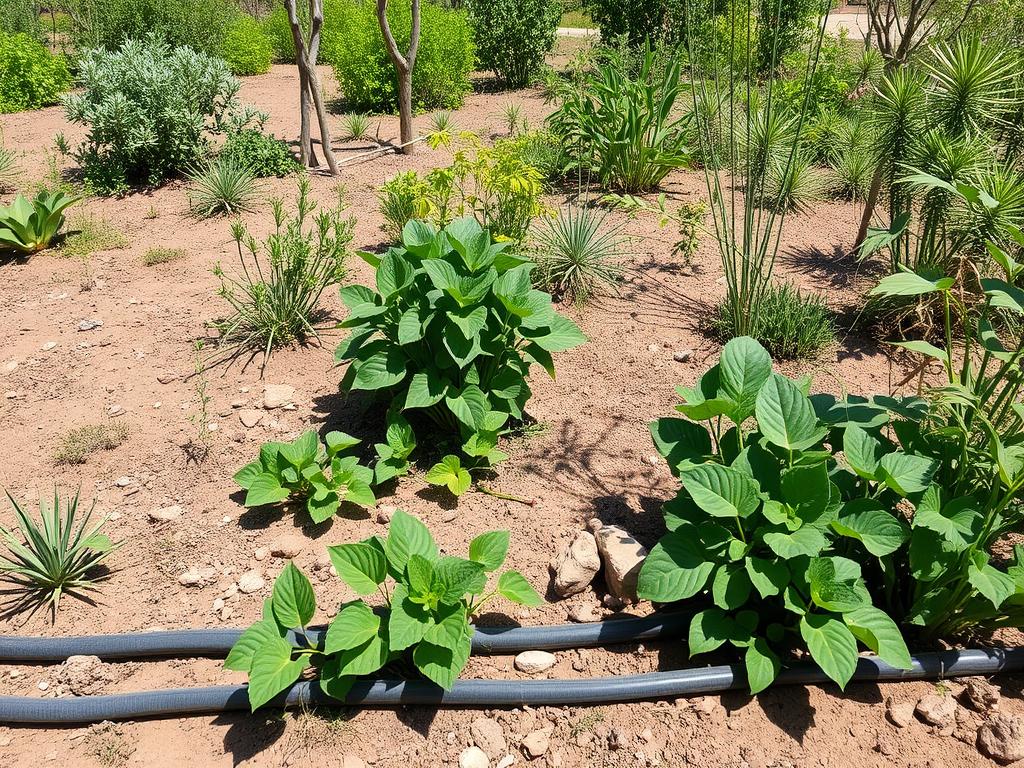
Legal Requirements for Greywater Home Gardening Systems
Before installing a greywater system, it’s essential to understand the regulations in your area. Requirements vary significantly by location, with some regions actively encouraging greywater use while others have strict limitations.
Common Regulatory Considerations
| Region | Permit Requirements | System Limitations | Allowed Uses |
| California | No permit for simple systems | Must not surface or pool | Subsurface irrigation only |
| Arizona | General permit for residential use | Up to 400 gallons per day | Surface and subsurface irrigation |
| Texas | Permit required for most systems | Must be treated for surface use | Limited to certain plants |
Questions to Ask Your Local Health Department
Designing Your Greywater Home Gardening System
The right greywater system for your home depends on your water usage, garden size, budget, and technical skills. Options range from simple, low-cost solutions to more complex systems with filtration and pumps.
Simple Greywater Systems
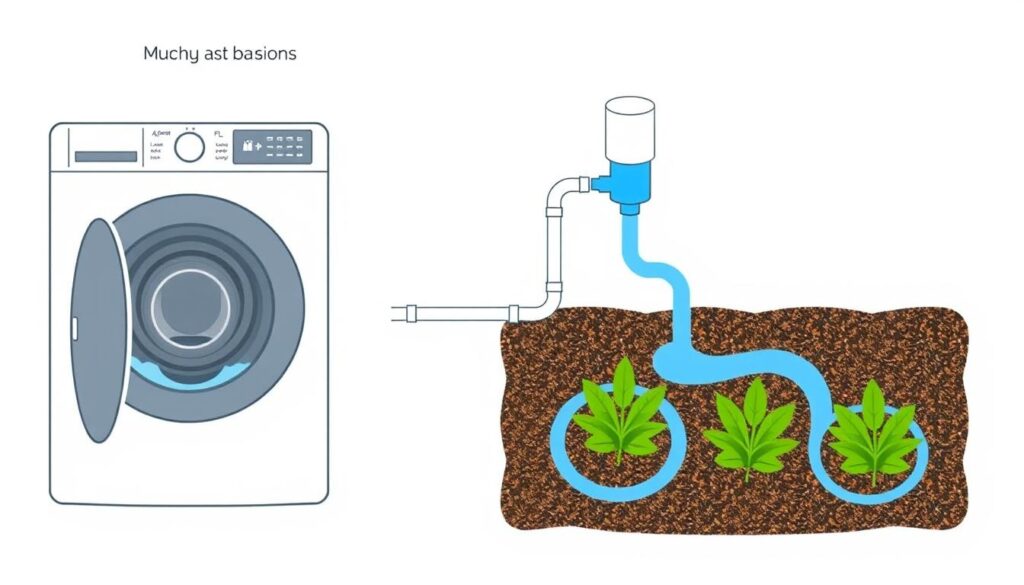
Bucket Method
The simplest approach involves collecting shower or sink water in a bucket and manually transporting it to your garden. While labor-intensive, this method requires no installation and lets you directly control where water goes.
Laundry-to-Landscape System
This popular, permit-exempt system in many states diverts washing machine water directly to your garden without altering household plumbing. The washing machine’s internal pump pushes water through a 1-inch pipe to multiple outlets in your garden.
“We live in the desert, and water is scarce… It’s been great to have all this additional water available for the garden.”
Advanced Greywater Systems
Branched Drain System
This gravity-based system diverts shower and sink water through pipes that split the flow into smaller branches, each feeding a separate mulched basin around trees or large plants. While more complex to install, branched drain systems require minimal maintenance once set up.
Pumped Systems with Filtration
For gardens located uphill from water sources or requiring more extensive distribution, pumped systems collect greywater in a surge tank, filter it, and pump it to where it’s needed. These systems offer more flexibility but require electricity and regular maintenance.
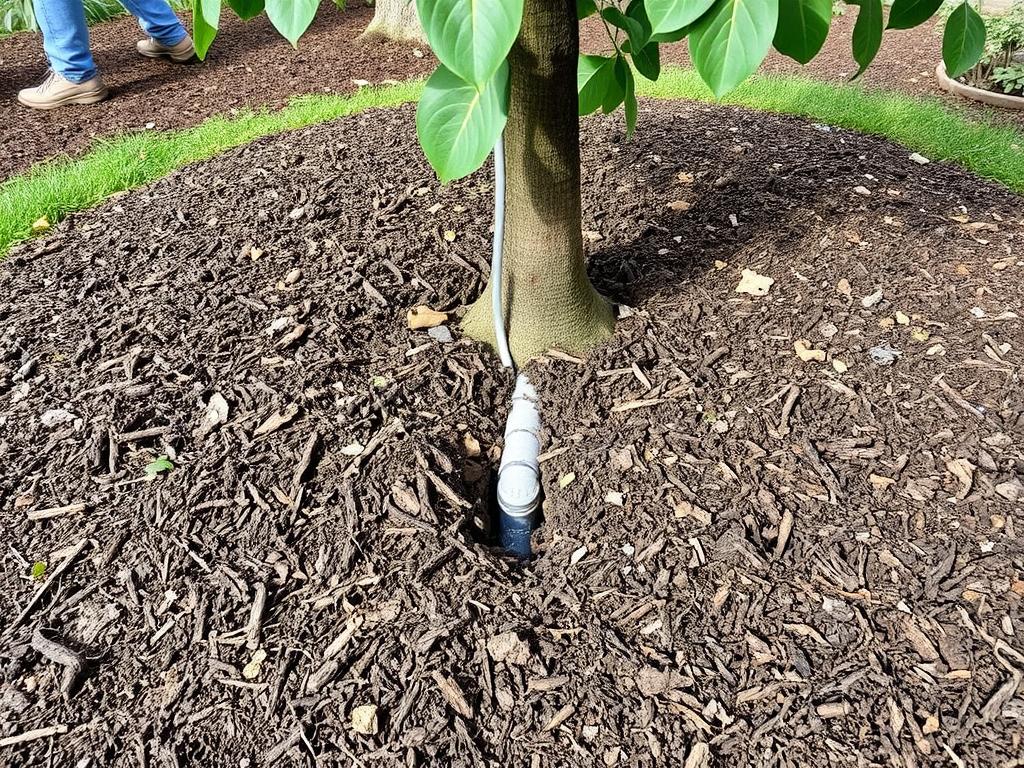
Greywater System Design Guide
Get our step-by-step guide to designing the perfect greywater system for your specific garden needs and water sources.
Selecting Plants for Greywater Irrigation
Not all plants thrive with greywater irrigation. The best choices are those that tolerate mild soap residues and irregular watering patterns.
Ideal Plants for Greywater
Plants to Avoid
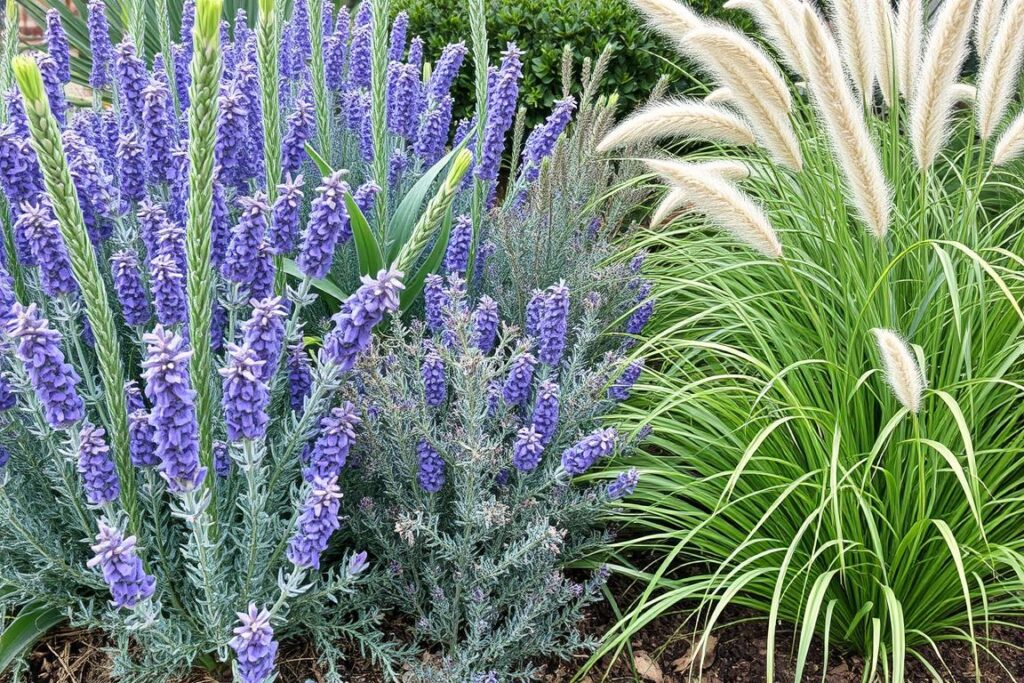
Choosing Safe Products for Greywater Systems
The soaps and detergents you use directly impact the safety and effectiveness of your greywater system. Conventional products often contain ingredients harmful to plants and soil biology.
What to Look For
What to Avoid
Important: Even products marketed as “natural” may contain plant-toxic ingredients. Always check the full ingredient list before using products in a greywater system.
Maintaining Your Greywater Home Gardening System
Regular maintenance ensures your greywater system functions properly and safely. Most simple systems require minimal upkeep, but all benefit from periodic checks.
Routine Maintenance Tasks
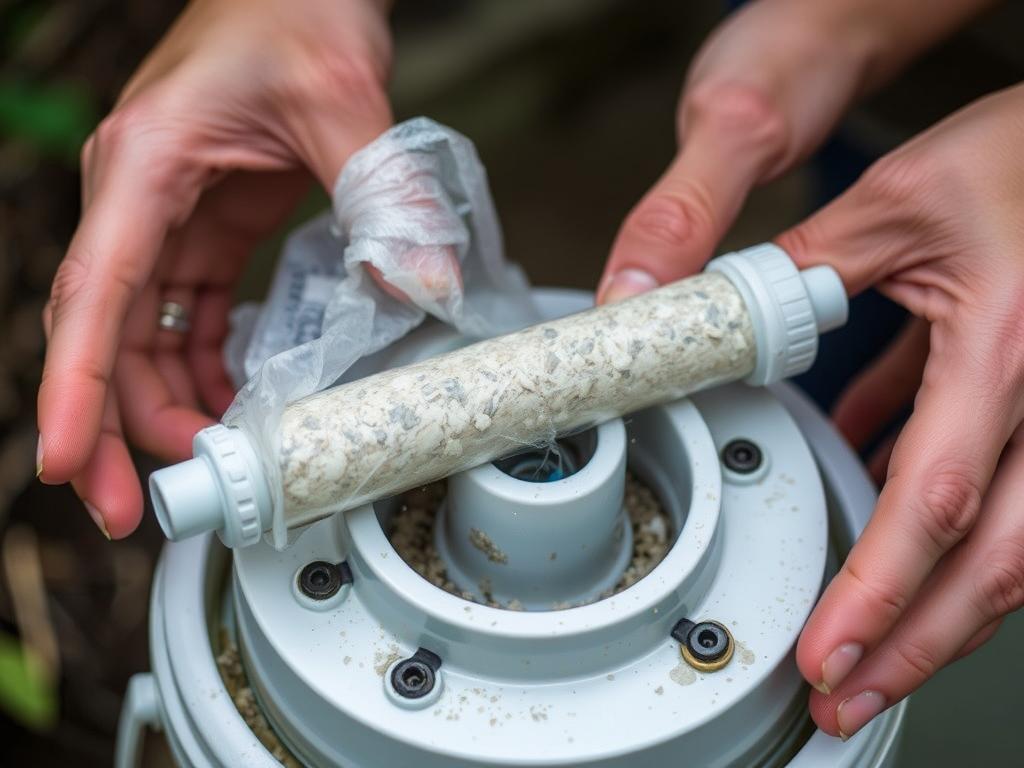
Troubleshooting Common Issues
| Problem | Possible Cause | Solution |
| Odors | Water pooling or storage | Improve drainage, adjust flow distribution |
| Clogged pipes | Hair, lint, or debris buildup | Install or clean filters, flush system |
| Plant stress | Harmful product residues | Switch to greywater-safe products |
| Uneven distribution | Clogged outlets or uneven terrain | Clean outlets, adjust flow control |
Greywater System Maintenance Calendar
Stay on top of system maintenance with our seasonal checklist and troubleshooting guide.
Case Study: Desert Oasis from Greywater
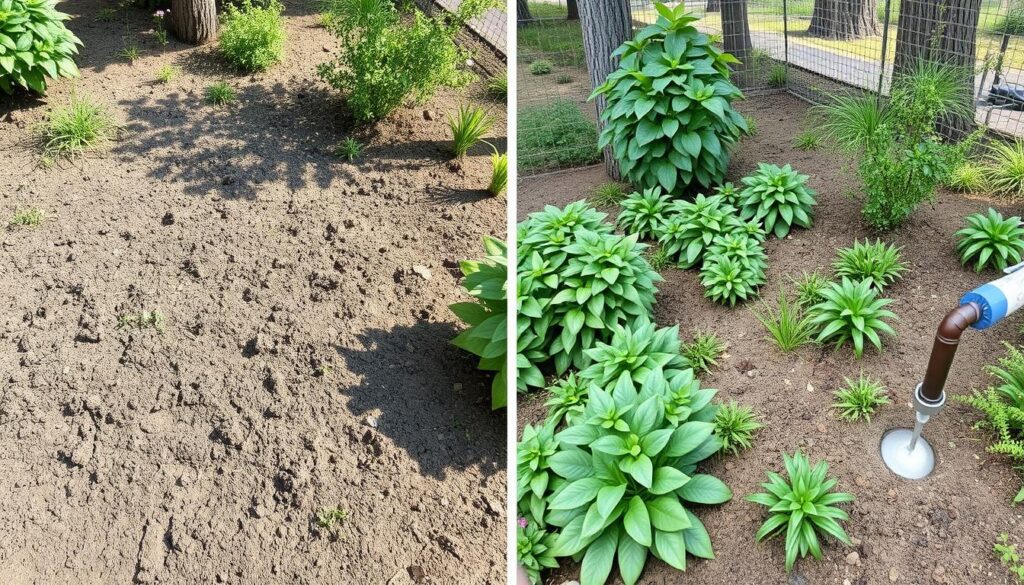
The Martinez family in Phoenix, Arizona, faced severe water restrictions and skyrocketing water bills. By implementing a simple laundry-to-landscape greywater system, they transformed their struggling garden into a thriving oasis while cutting their water usage by 40%.
“We used to spend over $200 monthly on water, mostly for keeping our garden alive. After installing our greywater system, our bills dropped below $120, and our plants are healthier than ever.”
System Details
Frequently Asked Questions
Is greywater safe for all types of plants?
Greywater is generally safe for established trees, shrubs, and ornamental plants. However, it’s best to avoid using it on root vegetables, acid-loving plants, or edible parts of plants that will be consumed raw. The mild soap residues in greywater can be beneficial for some plants but harmful to others.
Do I need a permit for a greywater system?
Permit requirements vary widely by location. Many states and municipalities don’t require permits for simple systems like laundry-to-landscape setups, while others may require permits for any greywater system. Always check with your local building department or health department before installation.
How much does a greywater system cost?
Costs range from nearly free (bucket method) to several thousand dollars for advanced systems. A typical DIY laundry-to-landscape system costs 0-0 in materials. Professional installation adds 0-,000 depending on complexity and local rates.
Can I store greywater for later use?
Greywater should not be stored for more than 24 hours. The organic matter in greywater begins to break down quickly, creating odors and potentially harmful bacteria. Design your system to use greywater immediately after it’s produced.

Embracing Greywater for Sustainable Home Gardening
Implementing a greywater home gardening system represents a significant step toward water conservation, reduced utility bills, and environmental stewardship. By starting with simple systems and following safety guidelines, you can transform “waste” water into a valuable resource that nourishes your garden even during drought conditions.
Remember that the most successful greywater systems are those that match your specific needs, garden layout, and local regulations. Start small, observe how your plants respond, and adjust as needed to create a sustainable water cycle right in your own backyard.
Complete Greywater Gardening Starter Kit
Ready to get started? Download our comprehensive guide package including design templates, plant lists, product recommendations, and maintenance schedules.
Will is a vertical gardening enthusiast and sustainable cultivation specialist with a passion for helping people grow fresh food in small spaces and dry climates. With years of hands-on experience testing smart irrigation systems, optimizing urban gardens, and exploring eco-friendly solutions, this author shares clear, practical tips to turn any corner into a productive garden. Whether on a sunny balcony or in a compact backyard, Will helps readers save water, maximize space, and enjoy healthy harvests year-round. When not tending to his plants, you’ll find him sipping herbal tea and sketching ideas for new sustainable projects.

